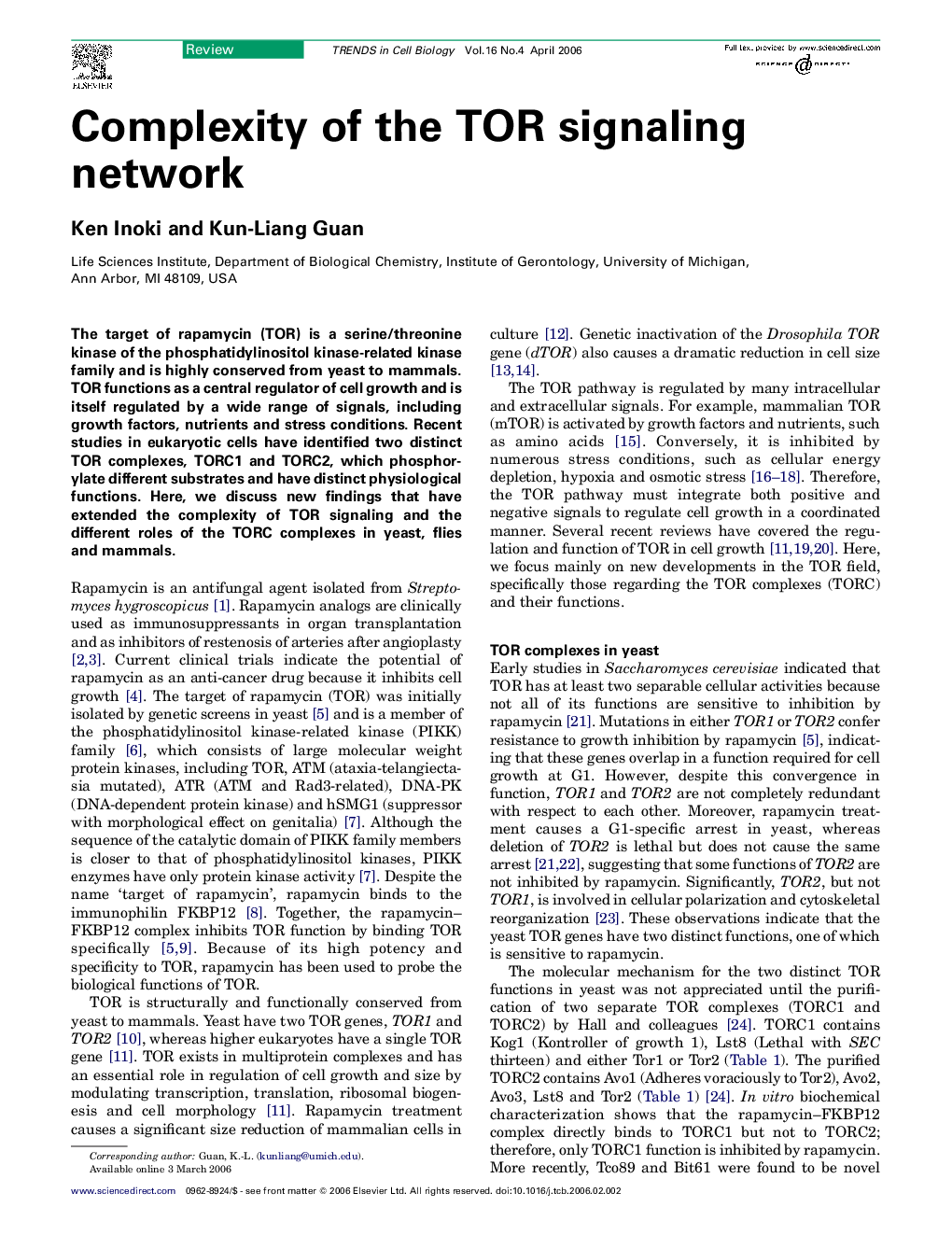| Article ID | Journal | Published Year | Pages | File Type |
|---|---|---|---|---|
| 2205246 | Trends in Cell Biology | 2006 | 7 Pages |
Abstract
The target of rapamycin (TOR) is a serine/threonine kinase of the phosphatidylinositol kinase-related kinase family and is highly conserved from yeast to mammals. TOR functions as a central regulator of cell growth and is itself regulated by a wide range of signals, including growth factors, nutrients and stress conditions. Recent studies in eukaryotic cells have identified two distinct TOR complexes, TORC1 and TORC2, which phosphorylate different substrates and have distinct physiological functions. Here, we discuss new findings that have extended the complexity of TOR signaling and the different roles of the TORC complexes in yeast, flies and mammals.
Related Topics
Life Sciences
Biochemistry, Genetics and Molecular Biology
Cell Biology
Authors
Ken Inoki, Kun-Liang Guan,
